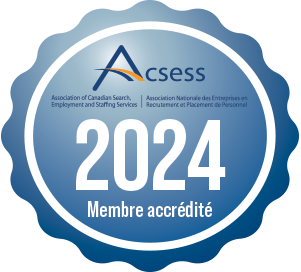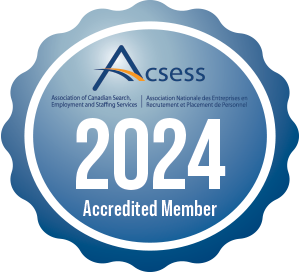In today’s competitive job market, where opportunities are often limited and the pool of applicants can be incredibly vast, your resume serves as the crucial first impression you make on potential employers.
With just a glance, your resume should convey not only your qualifications and experience, but also your unique value proposition, which sets you apart from the sea of other job seekers.
A well-crafted resume goes beyond mere documentation; it tells a story of your professional journey, skills, and accomplishments, compelling recruiters to take notice and consider you as a standout candidate.
From selecting the most impactful format to strategically highlighting your accomplishments and tailoring your content for specific roles, there are several simple strategies you can use to turn a mundane document into a professional resume that you can use as a powerful marketing tool to not only showcase your qualifications but also your unique personality and potential.
So, if you’re wondering how to write a resume, and how to create one that will help you stand out from the crowd, then you’re going to want to keep reading.
Because in this article, we’re delving into the art of creating a professional resume that commands attention and differentiates you from other job seekers, offering insights that will help you understand how to write a resume that resonates, impresses, and ultimately secures those coveted interview invitations.
How to Write a Resume That Will Stand Out From the Rest

Crafting a resume that distinguishes you from the competition requires a thoughtful approach that goes beyond the mere listing of qualifications.
To help you create a standout resume that captures attention and paves the way for success, here’s a comprehensive list of tips for writing a good resume:
Tailor Your Resume for the Role
When it comes to resumes, one size does not fit all. That being said, make sure to customize your resume for each job application by aligning your skills, experience, and keywords with the specific requirements of the position. Highlight the qualifications most relevant to the job, emphasizing how you can add value to the company.
Start with a Strong Opening
Begin your resume with a compelling summary or objective statement that succinctly outlines your professional goals, key strengths, and what you bring to the table, making sure that it’s relevant to whatever job you’re applying for. This serves as your initial pitch and sets the tone for the rest of the document.
Choose an Eye-Catching Format
You should opt for a clean, visually appealing format that is easy to read, and use a professional font (Arial is best), consistent spacing, and appropriate headings to organize your content. You can also consider using bold or italics to emphasize key points. That being said, you don’t want to get too elaborate, either. Make sure to use a Word doc format, keep it simple, and avoid including personal information or using overly complex formatting.
Quantify Achievements
Whenever possible, quantify your accomplishments with specific numbers, percentages, or metrics. This helps potential employers understand the impact you’ve had in your previous roles and adds a layer of credibility to your claims.
Showcase Transferable Skills
Whenever possible, you should highlight skills that are transferable across industries and roles, such as communication, problem-solving, leadership, and teamwork. These kinds of skills demonstrate your adaptability and versatility, which can put you a step above the rest. Make sure to include these skills in any resume for which they’re relevant, so recruiters will always be aware of these qualities.
Emphasize Achievements Over Responsibilities
Rather than simply listing your job responsibilities, focus on showcasing your accomplishments. Make a point of describing how your actions led to positive outcomes or improvements for your previous employers. You can do this by simply including a small paragraph after each position on your resume, outlining the achievement in question, and explaining how it pertains to the position you’re applying for.
Utilize Action Verbs
You should do your best to use strong action verbs that convey your proactive approach and demonstrate your contributions. Verbs, like achieved, implemented, initiated, and streamlined, can lend power to your statements.
Incorporate Keywords
Review the job description of any positions you’re applying for, and do your best to incorporate relevant keywords and phrases from these job descriptions throughout your resume to show that your skills align with the position you’re interested in. Many companies use what’s known as applicant tracking systems to screen resumes, and including keywords can increase your chances of passing through this initial stage.
Highlight Career Progression
If you’ve held multiple positions within the same company, make sure to showcase your career progression. This helps to illustrate your growth, commitment, and value to the organizations for whom you’ve worked.
Include a Skills Section
If possible, you should create a dedicated section to showcase your technical skills, software proficiency, and certifications. This should include skills in any and all software programs, including Word, Excel, Powerpoint, Outlook, Sage 50, Sage 300, QuickBooks, etc. This is particularly important for roles that require specific expertise.
Avoid Using Photos
If you’re trying to become a model, an actor, or applying for jobs in similar fields where your physical appearance is directly relevant to the role, then it probably makes sense to include a headshot. But unless you’re applying for these kinds of jobs, you should refrain from using any photos on your resume, as they take up valuable space on the page, and their inclusion could be perceived as unprofessional.
Use a Professional Email Address
You should ensure that your contact information includes a professional email address, such as your Gmail or Hotmail address, and try to avoid using your Indeed email. In addition, ideally, the name of your email address should consist of just your first and last names. In any case, avoid using email addresses that are overly casual, inappropriate, or outdated.
Include Your LinkedIn Profile
If you have a well-maintained LinkedIn profile, make sure to include the link in your resume. This allows employers to gain a more comprehensive view of your professional background, and review any endorsements you’ve gained from your colleagues over the years.
Keep it Concise
While it’s important to showcase your achievements and make your resume relevant to whatever job you’re applying for, you should do your best to keep it concise. Aim for a length of one page, or two pages at the absolute maximum, focusing on the most relevant and impactful information.
Painstakingly Proofread
Typos and grammatical errors can undermine your credibility and make it look like you’re not particularly interested in the role you’re applying for. With that in mind, make sure to carefully proofread your resume and consider getting someone else to look it over, as well.
Consider Design Elements
Infusing subtle design elements like colour accents or bullet points can help to enhance the look of your resume by adding visual appeal. But whatever you do, you’ve got to ensure that these elements complement, rather than distract from, the content of your resume.
Seek Feedback
Before finalizing your resume, you should seek feedback from professionals in your field or career advisors. Fresh perspectives can provide valuable insights and help you to refine your document.
Include Relevant Training
If you’ve attended workshops, seminars, or online courses relevant to the job, include them in a professional development section to showcase your commitment to continuous learning.
Address Employment Gaps
If you have gaps in your employment history, briefly address them in your resume or cover letter. One of the best ways to do this is by explaining how you utilized that time for self-improvement or acquiring new skills.
Create a Strong Online Presence
Beyond just knowing how to write a resume, you should also ensure that your online presence is consistent and professional. This includes things like your LinkedIn profile, personal website, portfolio, and any other platforms that are relevant to your industry.
All things considered, understanding how to write a resume that stands out can be tough, as it requires a combination of strategic thinking, attention to detail, and effective communication.
But by tailoring your resume, showcasing your achievements, and presenting yourself as a unique and valuable candidate, you can increase your chances of making a lasting impression on potential employers.
Remember, your resume is your personal marketing tool, and if you follow the tips we’ve offered above, you’ll be well on your way to securing the opportunities you’re looking to achieve.
Are you looking for job opportunities in B.C.? Our professional recruiters and certified personnel consultants can help you to find the perfect placement. Contact us today to get started.



